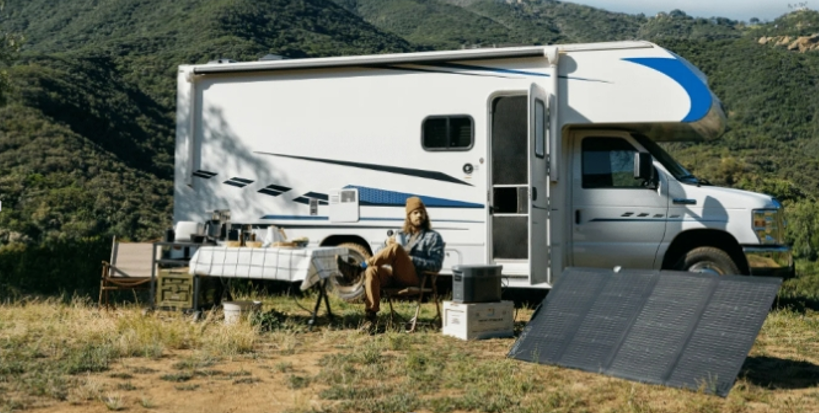What’s the Best Portable Power Station for Van Life?

Van life offers incredible freedom, but reliable power makes the difference between adventure and frustration. Modern van dwellers need electricity for lighting, refrigeration, device charging, and sometimes even air conditioning or cooking appliances. Unlike traditional RV setups with built-in generators, portable power stations provide flexible, clean energy without fumes or noise. They’re perfect for those who value stealth camping or prefer eco-friendly solutions. In this article, we’ll explore how to choose the perfect portable power station for van life and maximize its potential on the road.
What to Look for in a Van Life Power Station?
Battery Capacity & Power Output for Your Needs
Choosing the right capacity depends entirely on your power requirements. A 300Wh unit might suffice for basic needs like charging phones and running LED lights, while serious van lifers often prefer 1000Wh+ stations to power refrigerators, laptops, and small appliances. Consider that a typical 12V fridge uses about 30-60Wh per hour, meaning a 500Wh station could run it for 8-16 hours. High-wattage appliances like induction cooktops (1500W+) require stations with sufficient surge capacity. Make a list of all devices you’ll use simultaneously, calculate their total wattage, then choose a station with at least 20-30% extra capacity. Remember that lithium batteries perform best when kept between 20-80% charge, so factor that into your calculations for real-world usage.
Solar Charging Compatibility for Off-Grid Living
Solar compatibility transforms your power station from finite to nearly limitless. Look for units that accept high solar input (200W+) for faster charging in limited daylight conditions. The best setups pair foldable solar panels that can be angled toward the sun while parked. Many van lifers mount panels on their roof while keeping portable ones for campsite use. Consider that a 200W solar panel in ideal conditions produces about 800-1000Wh daily – enough to replenish a medium-sized station. Some advanced stations support dual charging (solar + AC) to maximize input when briefly near power outlets. Solar charging is particularly valuable for long-term boondocking, ensuring you never run out of power in remote locations.
See also: Advanced Techniques in Bookkeeping 8655885121

Portability & Durability for Life on the Road
Van life demands equipment that can withstand constant movement and variable conditions. Look for power stations with rugged, vibration-resistant designs and protective bumpers. Weight matters too – while 100lb+ units offer massive capacity, they’re impractical for most vans. The sweet spot is typically 30-60lb stations that balance capacity with manageable weight. Compact dimensions are crucial for fitting in tight van spaces, with some models designed specifically for vehicle installation. Water and dust resistance (IP ratings) become important if you’ll use the station outside your van. Handles or wheels help with repositioning, while secure mounting options prevent dangerous movement while driving.
How to Maximize Your Power Station’s Efficiency?
Pairing with Solar Panels for Unlimited Energy
Smart solar integration makes all the difference in van life energy independence. Start by matching your solar panel wattage to your station’s maximum input – a 200W station should pair with at least 200W of solar for optimal charging. Flexible panels work well for curved van roofs, while rigid panels offer better efficiency. Many van lifers use a combination: permanent roof panels for “always on” charging and portable panels for boosting when parked. Position panels to avoid shading (even partial shade dramatically reduces output) and angle them toward the sun when possible. Morning sun is particularly valuable in winter months. Consider a solar charge controller if your station doesn’t have one built-in, as it protects your battery from overcharging. With proper solar setup, you can stay powered indefinitely in sunny locations.
Managing Power Consumption to Avoid Drain
Conscious energy use extends your power between charges. Replace incandescent bulbs with LEDs (using 10% of the power), and choose energy-efficient appliances like 12V refrigerators over AC models. Use a power monitor to identify “phantom loads” – devices that drain power when not in active use. Many van lifers adopt a “tiered” power approach: critical devices (fridge, medical equipment) get priority, while luxuries (entertainment systems) only run when surplus exists. Learn your devices’ actual consumption with a watt meter – you might discover your “50W” fan actually uses 70W on high. Develop habits like charging devices during peak solar hours rather than at night. In cold weather, keep your station insulated (lithium batteries lose efficiency below freezing) and reduce non-essential usage. Smart management means less generator reliance and longer battery life.
Essential Accessories for Better Performance
The right accessories transform a good power station into a complete van life system. A DC-DC charger allows efficient charging from your vehicle’s alternator while driving. High-quality extension cables let you position solar panels optimally at campsites. Waterproof port covers protect outlets from dust and moisture. A battery monitor gives real-time usage data for better energy decisions. Many van lifers add pure sine wave inverters for sensitive electronics when their station’s built-in inverter lacks sufficient capacity. Cable organizers keep your setup tidy in tight spaces. For winter camping, battery warmers maintain optimal operating temperature. Some users install transfer switches to easily alternate between power sources. Don’t forget simple but crucial items like outlet splitters or USB hubs to maximize your station’s connectivity options in small living spaces.
Conclusion
Selecting the perfect portable power station for van life requires balancing capacity, charging options, and physical practicality. The best choice depends on your specific power needs, travel style, and van setup. For those prioritizing reliability and performance, brands like EcoFlow offer excellent options with robust construction, fast charging capabilities, and dependable customer support. Remember that your power system is the heartbeat of your mobile home – it keeps food fresh, devices charged, and comfort systems running. Whether you’re a weekend warrior or full-time nomad, investing in the right power solution pays dividends in freedom and convenience. With proper selection and smart usage habits, you’ll enjoy all the benefits of modern living while exploring anywhere the road takes you.




